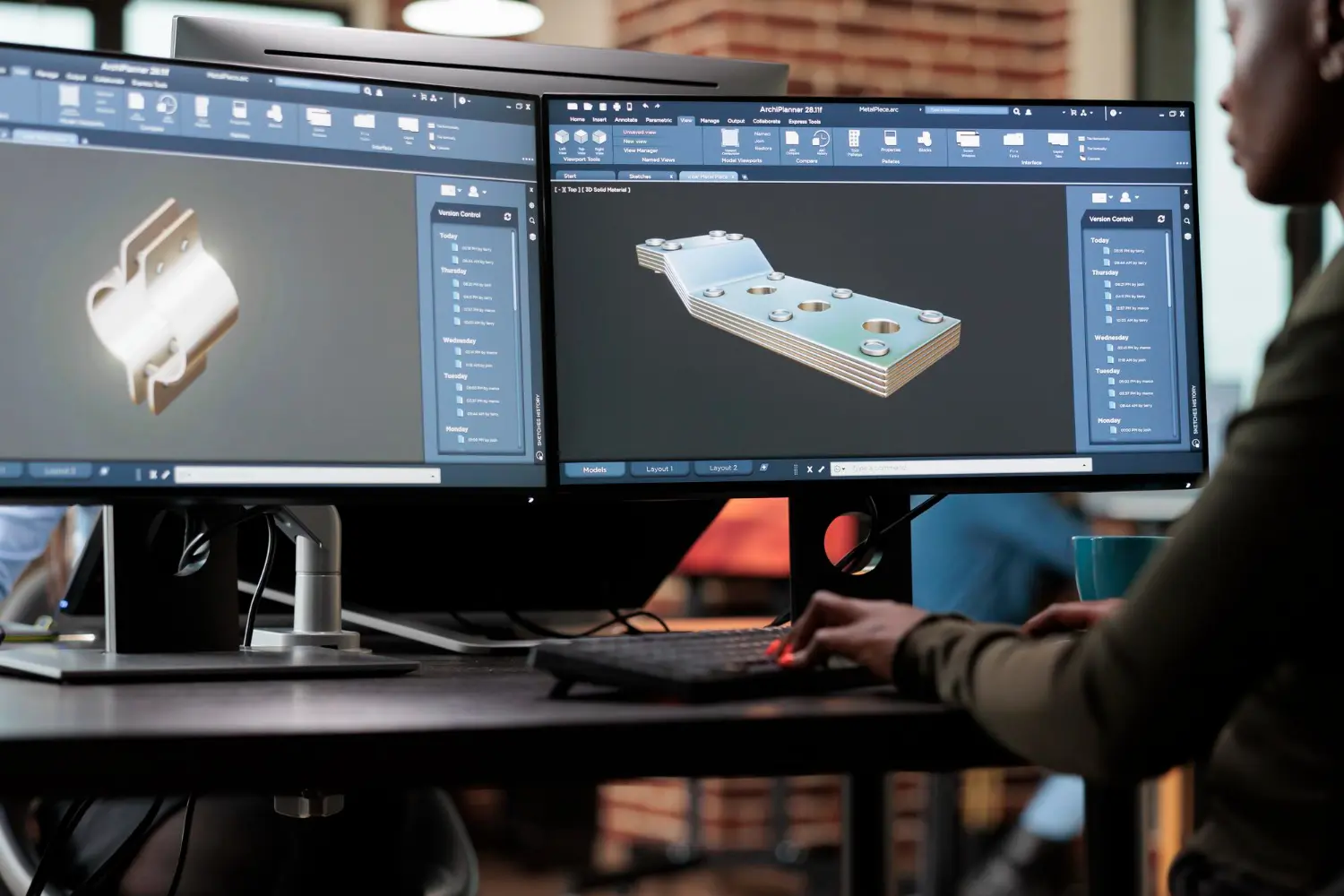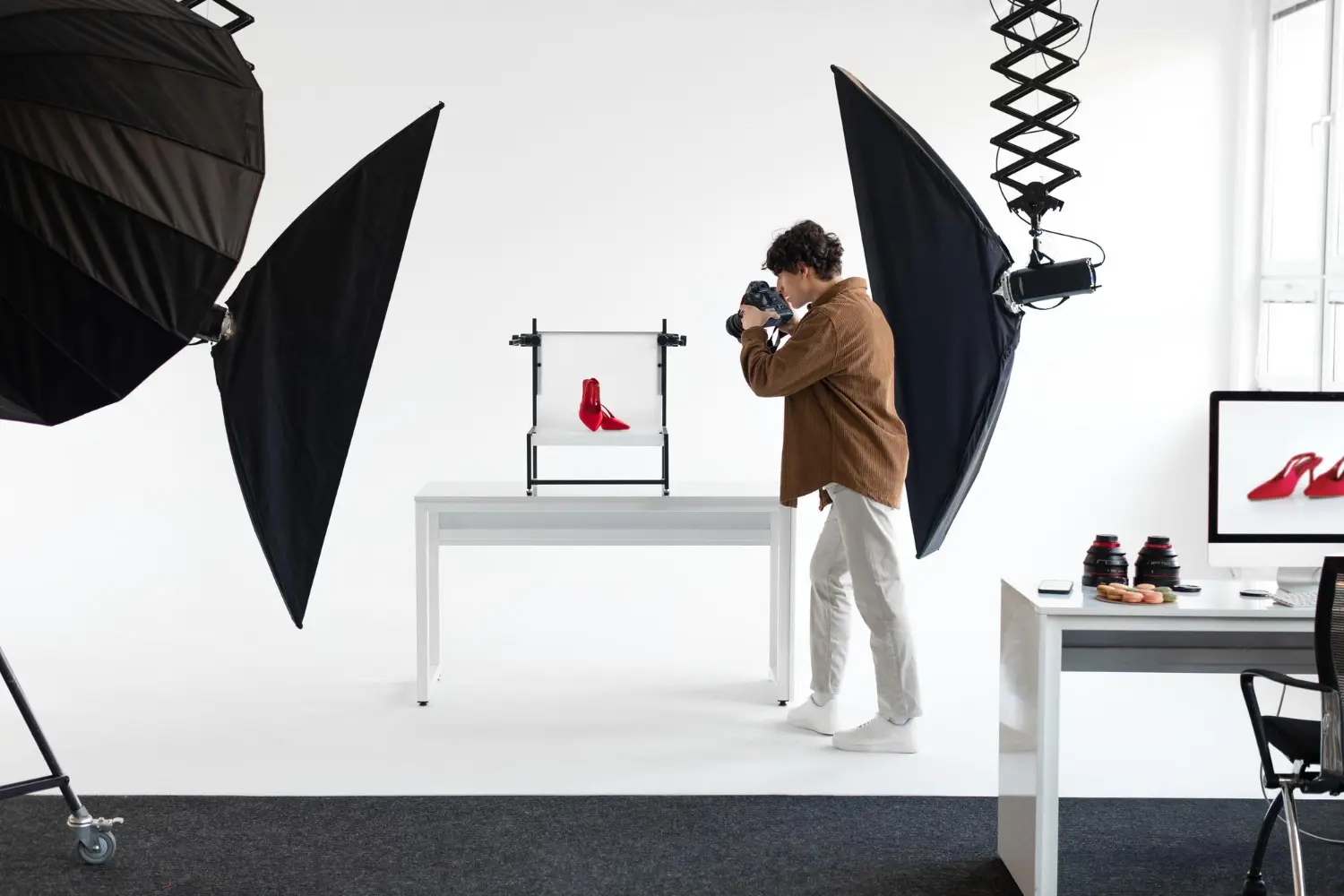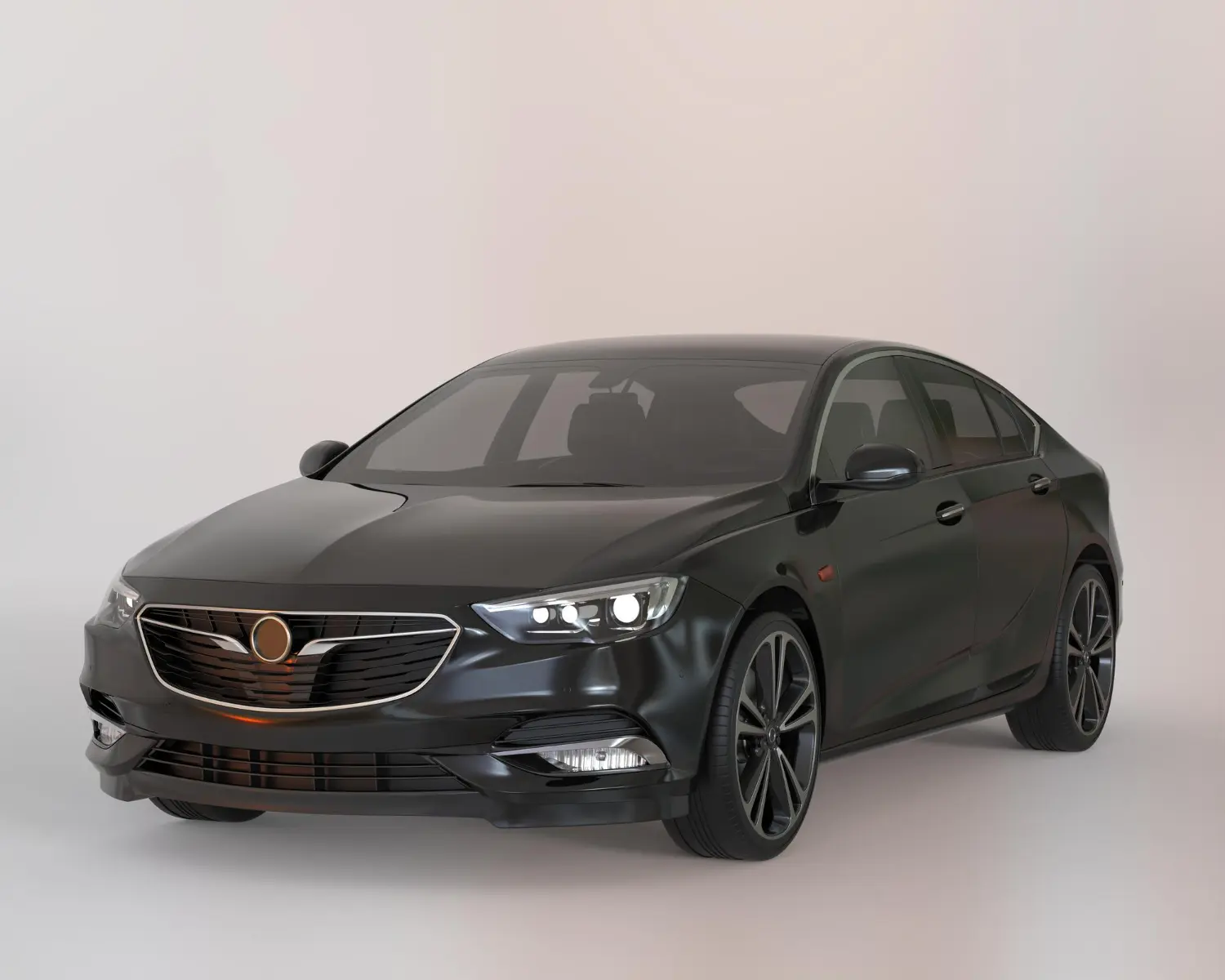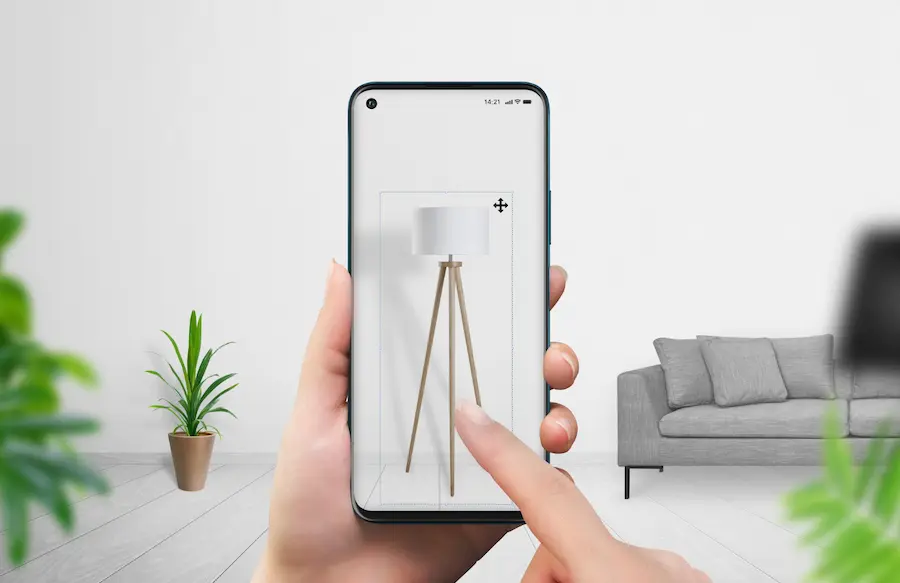With the rise of eCommerce, accurate product representation has become crucial for driving sales and reducing return rates. Virtual photography is transforming how products are displayed online, offering a powerful tool to boost consumer confidence and conversion rates.
What is virtual photography?
Virtual photography is the creation of images using software to simulate real-world photography. Instead of using a camera, 3D virtual photography depends on using 3D models and graphics to create pseudo-photoshoots. This technology then produces lifelike images that can be manipulated to show different angles, colors, and features, providing a realistic depiction of products for any mixed-media marketing applications. This technology is especially useful in eCommerce product photography, where the need for a system that creates detailed and accurate images completely digitally is paramount. Virtual photography can also help during the prototyping process, as in conjunction with tools like product configurators, companies can quickly and effortlessly mock up new material for product variations. For example, if an umbrella company is creating a summer marketing campaign, they can use a product configurator to modify their umbrella into an ideal beach umbrella with bright colors and flowery patterns, then set up this virtual model on a digital beach, creating a mockup photoshoot within minutes.
How does virtual photography work?
The process of virtual photography begins with creating 3D models of the products. It is important to take into account what type of model you want to use for your products, as different formats have different strengths and weaknesses. These models are then updated with textures, lighting, and other elements to create better-quality images. The final images can be adjusted to show different variations of the product without the need for multiple photoshoots. This flexibility makes 3D virtual photography a cost-effective and efficient alternative to traditional methods. While upfront costs slightly overshadow those of physical photoshoots, the recurring costs of using a 3D virtual photography solution are fractions of those incurred by physical photography.

Virtual photography benefits
Adopting 3D virtual photography offers several advantages over traditional photography. These benefits can significantly improve many aspects of your product presentations, leading to better customer experiences and higher conversion rates.
Cost savings
Creating images digitally eliminates the need for expensive equipment, studio rentals, and professional photographers. Companies can save on costs associated with setting up and managing physical photoshoots. These savings can be substantial, especially for businesses that frequently update their product lines or have a large catalog of items.
Flexibility and variety
Virtual images can be easily edited to show different product variations, colors, and settings. This adaptability is especially beneficial in eCommerce product photography, where showcasing multiple options is crucial for customer satisfaction. Retailers can quickly update images to reflect changes in inventory or to highlight seasonal products and special promotions.
Faster time to market
Virtual images can be produced quickly, reducing the time needed to launch new products. This speed is vital for staying competitive in fast-paced markets. Quick turnaround times allow businesses to respond swiftly to market trends and consumer demands, ensuring their marketing material remains relevant and attractive to their target audience.
Reduced return rates
According to a study by The National Retail Federation, the overall return rate of online purchases is over 20%. Virtual photography addresses this issue by providing highly accurate and detailed images, which help set proper customer expectations and reduce the likelihood of returns.
Industries benefiting from virtual photography
Various industries can use virtual photography to enhance their product presentations. The versatility of this technology allows it to be applied in multiple fields, each benefiting uniquely from its capabilities.
Furniture and home decor
Virtual photographers can create detailed images of furniture pieces in different settings, helping customers visualize how items will look in their homes. For instance, a virtual photograph can show a sofa in various room layouts, different lighting conditions, and multiple fabric options. This enables customers to better understand the product's dimensions and aesthetics, ultimately aiding their purchasing decision. Additionally, virtual photography can depict furniture with different accessories, such as throw pillows and blankets, to showcase how the product can be styled.
Fashion and accessories
Brands can use virtual photography to display clothing and accessories in various styles and colors, appealing to a broader audience. A single dress can be shown in multiple colors and patterns, allowing customers to see all available options without needing physical samples. Accessories like jewelry, handbags, and shoes can be virtually paired with different outfits to suggest complete looks. This approach not only saves time and costs associated with traditional photography but also provides a more engaging shopping experience for consumers.

Automotive
Car manufacturers can showcase vehicles in different configurations, colors, and environments, offering potential buyers a comprehensive view of their options. For example, a single car model can be displayed with various paint colors, interior trims, and wheel designs. Virtual photography can also simulate the car in different settings, such as urban environments, countryside roads, and nighttime scenes. This comprehensive visual presentation helps customers make more informed decisions by giving them a crystal-clear idea of what to expect from their purchase.
Consumer electronics
The electronics industry benefits significantly from virtual photography by presenting gadgets and devices with high detail and interactivity. Companies can showcase smartphones, laptops, and other devices with detailed close-ups of features and functionalities. Interactive 3D models allow customers to rotate and zoom in on products, providing a hands-on feel without the need for physical handling. This level of detail is particularly useful for highlighting technical specifications and unique selling points.
Real estate
In the real estate sector, virtual photography can create immersive experiences for potential buyers and renters. Virtual tours of properties can be crafted using 3D models, allowing clients to explore homes and commercial spaces from their devices. This approach is especially valuable for showcasing new developments or properties that are still under construction. High-quality virtual images and tours can attract more interest and facilitate quicker sales or rentals.
How to implement virtual photography
Implementing 3D virtual photography involves several steps, each crucial for achieving the best results. Following a structured approach ensures that the images produced meet high standards of quality and realism.
-
Choose the right software
Selecting the appropriate software is the first step in implementing virtual photography. Choose software that suits your needs. CAD programs and 3D modeling tools are essential for creating realistic images. There are many options available, so consider factors like ease of use, compatibility with your existing systems, and the specific features offered by each software package.
-
Develop 3D models
Creating detailed 3D models of your products is crucial for achieving lifelike images. These models should accurately represent the dimensions, shapes, and features of the real products. Ensure accuracy in dimensions and textures to produce lifelike images. You can either create these models in-house if you have the expertise or outsource them to specialized service providers.
-
Enhance with textures and lighting
Applying realistic textures and lighting to your models adds depth and authenticity to the images. This step involves selecting appropriate materials and adjusting lighting conditions to mimic real-world scenarios. Apply textures and lighting to your models to add depth and realism. Adjust these elements to create different moods and settings. Experiment with various combinations to see what best highlights the product's features.
-
Render and finalize images
Rendering is the process of generating the final images from your 3D models. This step involves using rendering software to produce high-quality, photorealistic images. Use rendering software to produce the final images. These can be further edited to meet specific marketing requirements. Pay attention to details like shadows, reflections, and any imperfections that might make the images more believable.

-
Integrate into your eCommerce platform
Once your images are ready, the next step is to upload them to your eCommerce site. Ensure they are high-resolution and optimized for web use to provide the best user experience. High-quality images enhance the overall look of your site and can significantly improve user engagement and conversion rates.
-
Monitor and update regularly
After implementing virtual photography, it's important to regularly monitor the performance of the images on your eCommerce platform. Use webpage analysis tools to track vital metrics such as page views, time spent on product pages, and conversion rates. Based on this data, update and optimize the images as needed to continually improve their effectiveness.
Conclusion
Virtual photography is revolutionizing how products are showcased online. Its cost-effectiveness, flexibility, and efficiency make it an indispensable tool for businesses looking to refresh their online presence. By adopting this technology, companies can provide customers with detailed, realistic images that help drive sales and reduce return rates. For more information on how 3D Source can help you implement virtual photography, get in touch with us through the contact form.





